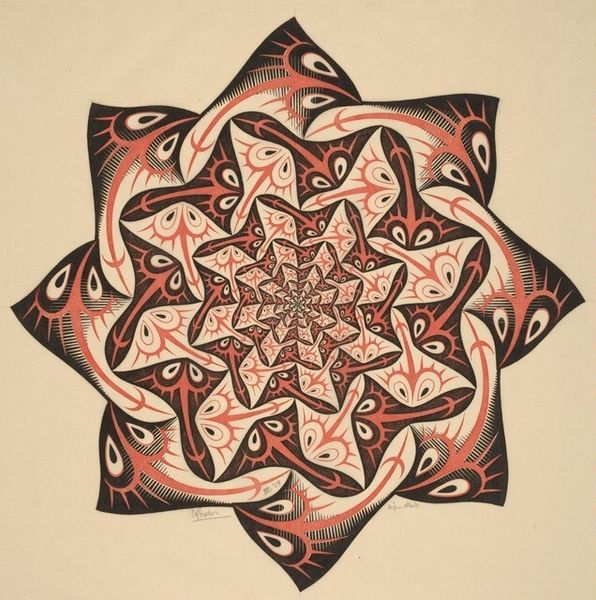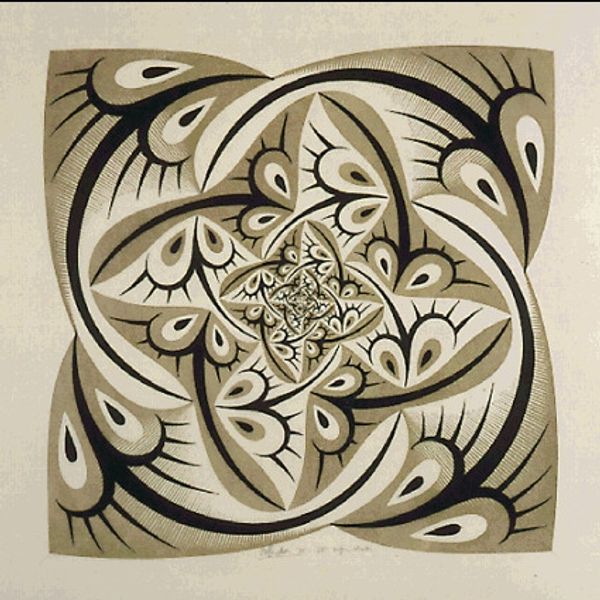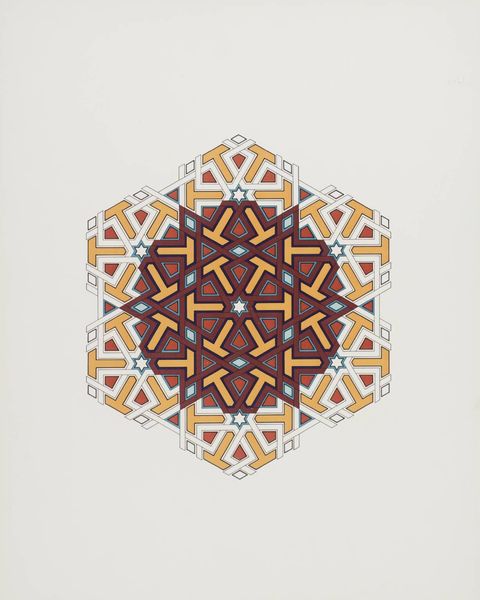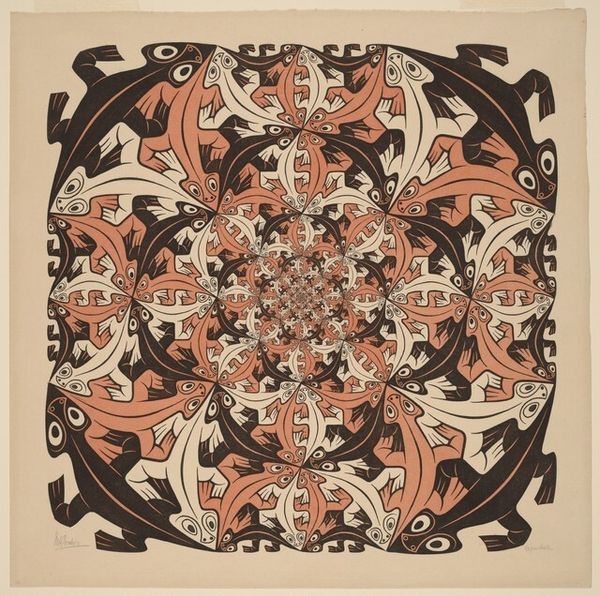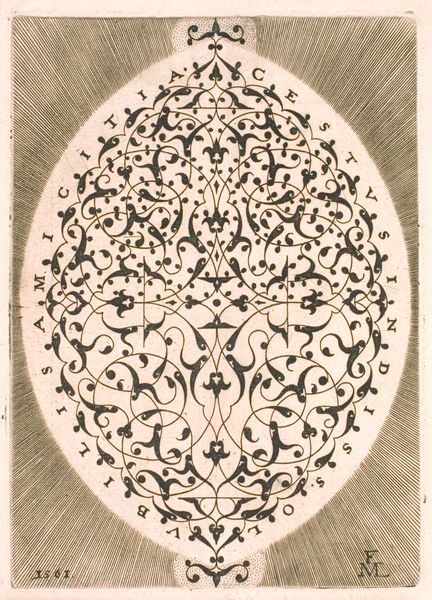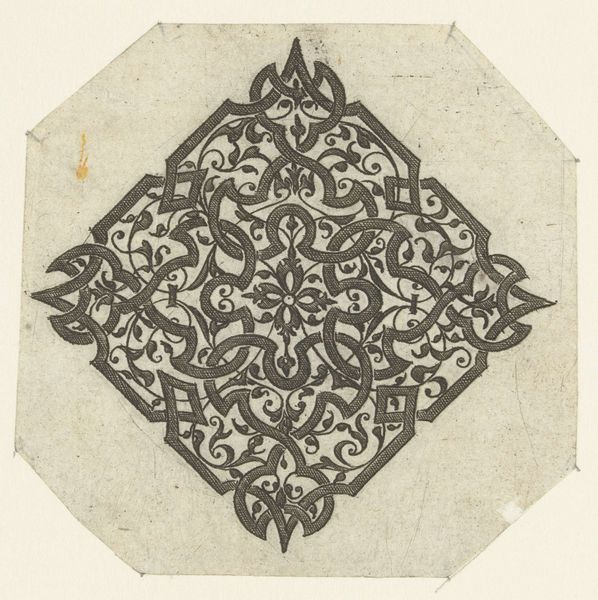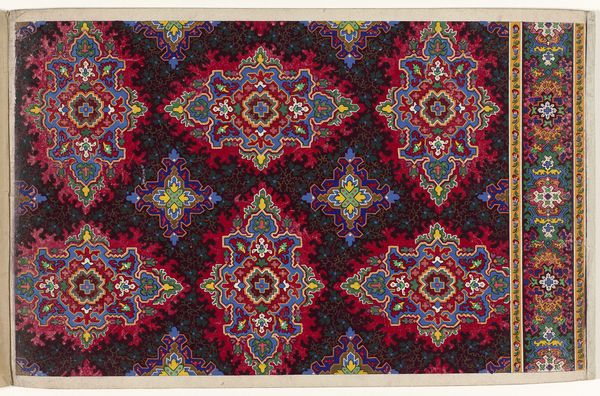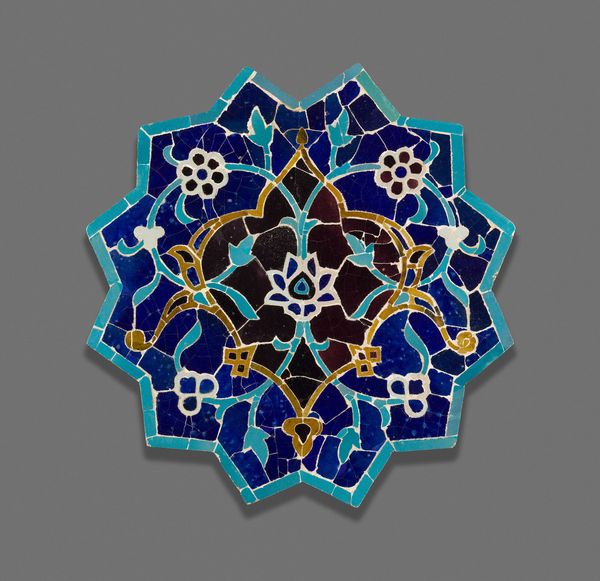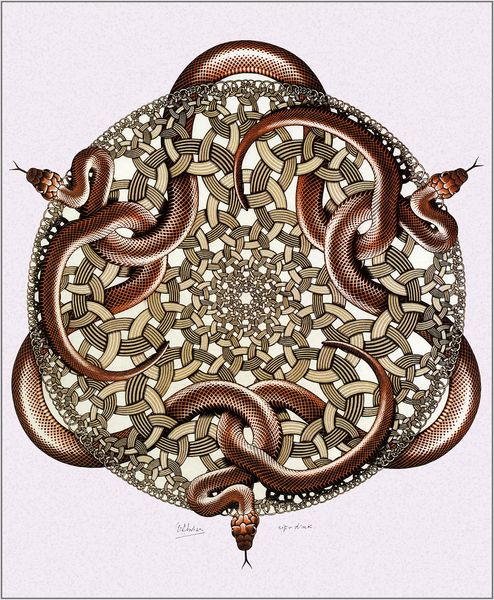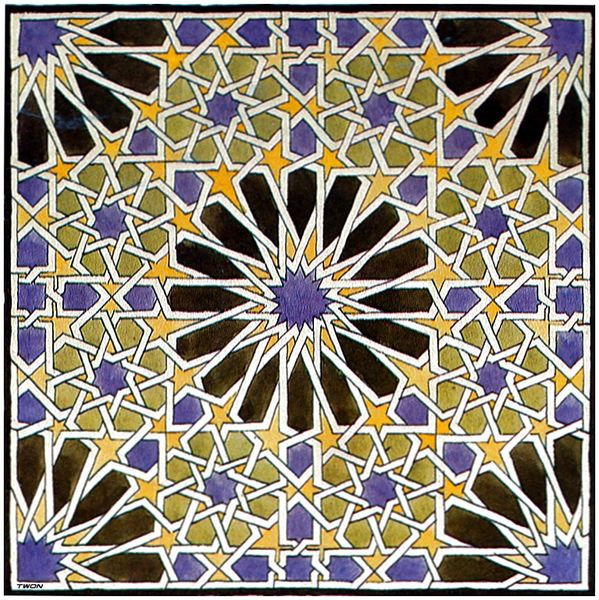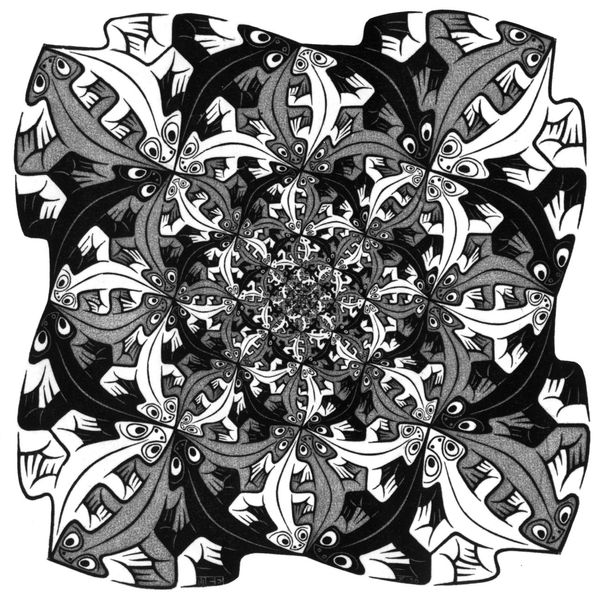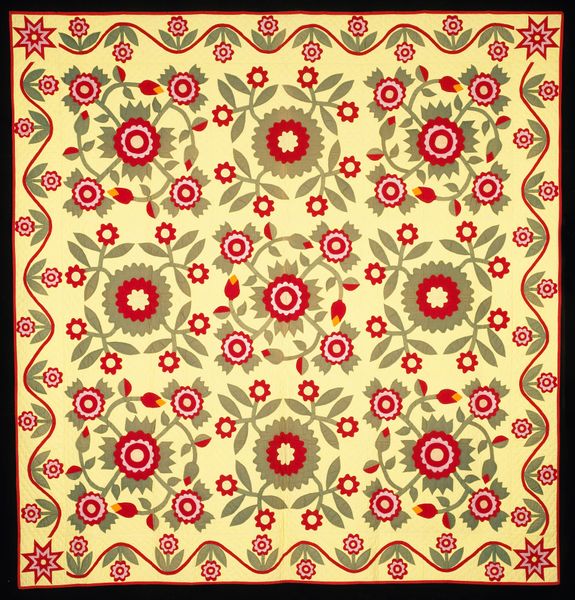
graphic-art, print
#
graphic-art
#
op-art
#
animal
# print
#
pattern
#
pop art
#
geometric pattern
#
abstract pattern
#
geometric
#
abstraction
#
pattern repetition
#
modernism
Copyright: M.C. Escher,Fair Use
Editor: We're looking at M.C. Escher's "Path of Life I" from 1958, a print that immediately pulls you in. The radiating pattern, rendered in orange and black, has a mesmerizing quality, almost hypnotic. It looks like it wants to either grow larger, or collapse onto itself. How do you interpret this work? Curator: Ah, Escher! He's the wizard of visual trickery. The eye is constantly moving, right? Are we spiraling inward or bursting outward? It reminds me of a kaleidoscope reflecting on itself into infinity. What fascinates me most is that tension, between meticulous planning and the illusion of organic growth. See how each little figure, almost a stylized bird, interlocks with its neighbor? Editor: Yes, the shapes definitely make it seem like these creatures are either diving into, or hatching out from, the central point. Curator: Exactly! The choice of just two colours is key too. Black to define, orange to soften the sharp edges just enough. And you can feel how mathematical it is but at the same time, isn't it funny how it tickles a kind of primeval part of the brain that craves patterns? Escher tapped into something profound. Editor: It really makes you wonder about the way our brains process visual information. It’s more than just lines and shapes; there’s almost a narrative happening here. Curator: Precisely. We bring our own "story" to it. We see in the art what resonates in ourselves, the fractal, complex paths that are our own. I'm never not moved by Escher. And what are you walking away with after pondering this Escher print? Editor: Definitely a renewed appreciation for the intersection of art and mathematics! And the idea that what we see is as much about ourselves as it is about the art itself.
Comments
No comments
Be the first to comment and join the conversation on the ultimate creative platform.
